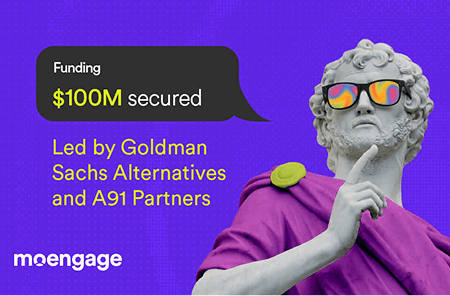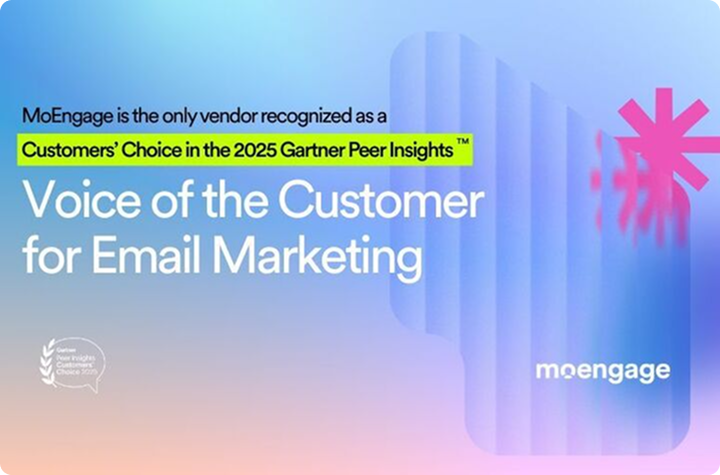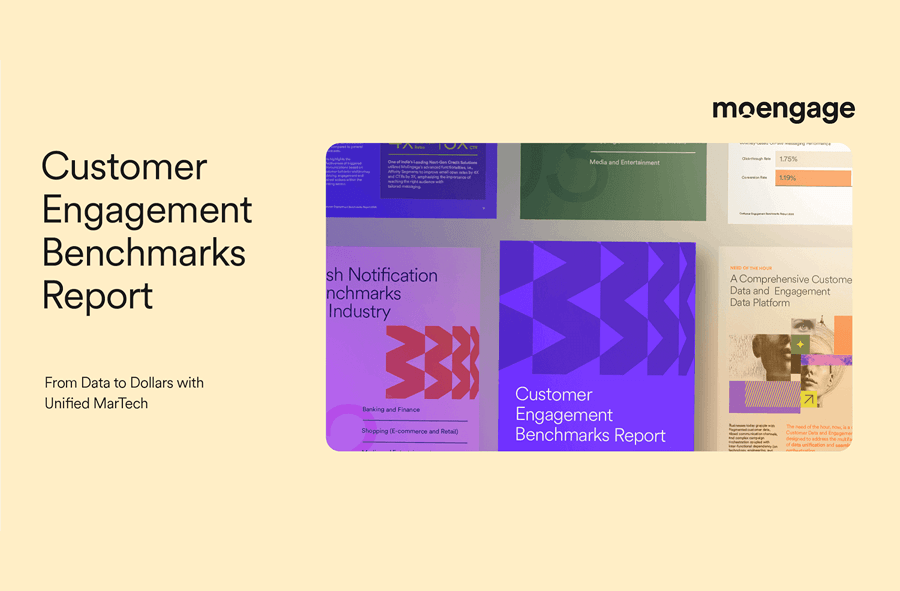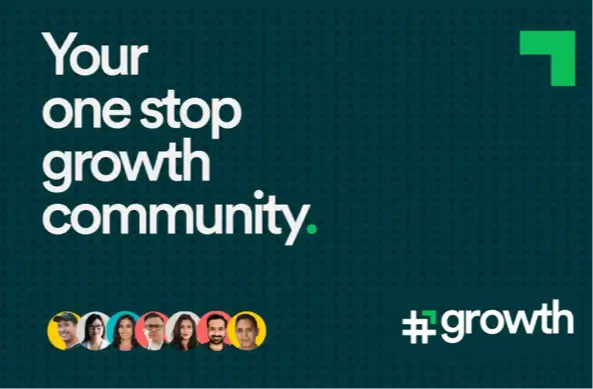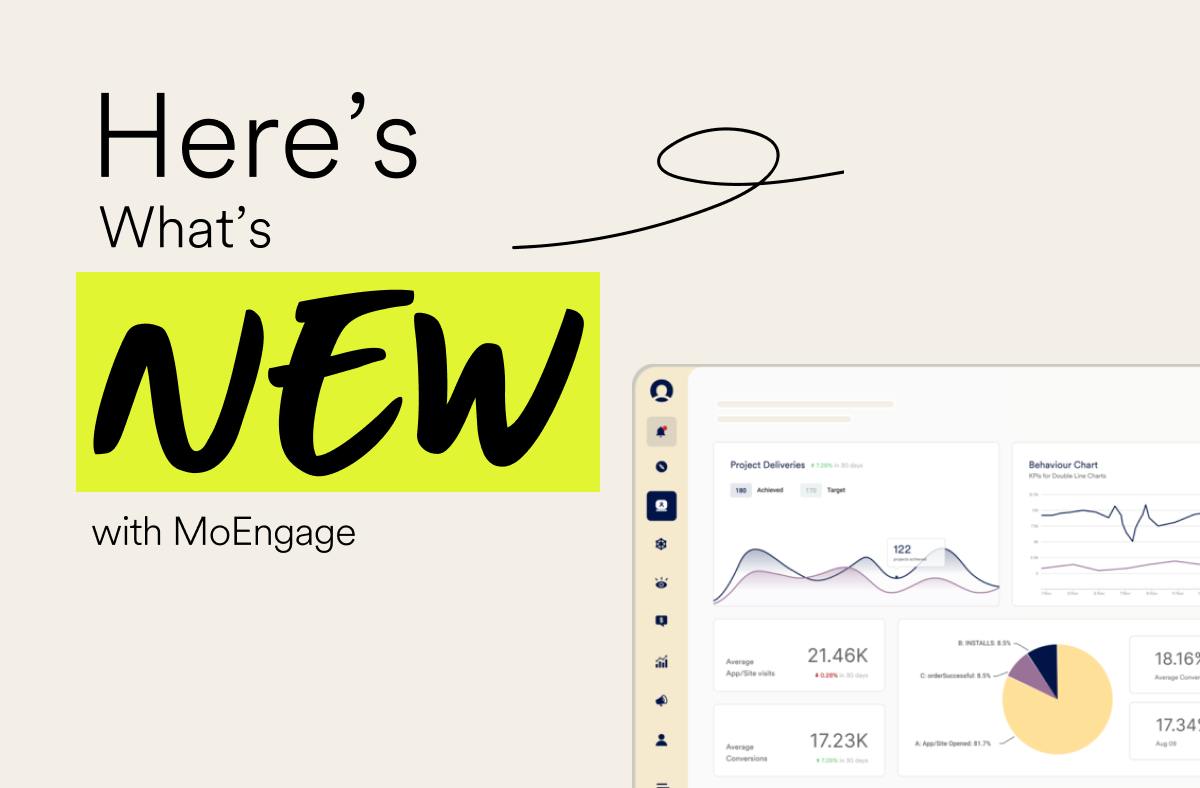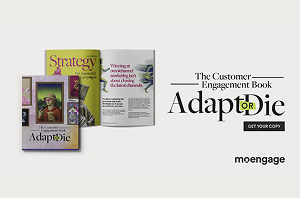Angela Rueda Q&A: Customer Engagement Book Interview

Reading Time: 10 minutes
To get what you want as a marketer, building influence and internal credibility is crucial.
It’s a topic we delve into deeply in Chapter 4 of our recently published book, “The Customer Engagement: Adapt or Die,” where we explore the art of navigating organizational dynamics and gaining stakeholder buy-in.
To bring this chapter to life, we sat down with Meta’s Director of Business Marketing Technology, Angela Rueda, for an insightful Q&A session.
In this interview, Angela shares her wealth of experience on establishing credibility, showcasing the value of new ideas, and aligning marketing goals with broader business objectives.
Get ready to learn practical strategies on how to pitch innovative concepts, handle differing priorities across departments, and ultimately, drive impactful change within your organization. Angela’s insights are a must-read for any marketer looking to enhance their influence and become a true catalyst for success.
Angela Rueda Q&A Interview
1. Early in your marketing career, what steps did you take to establish credibility when proposing new campaigns, tools, or strategies?
I think that at the beginning of my career it really all focused on execution, on having very tangible wins with rigorous execution and increasing the complexity of projects.
Unless you have that solid base of proving to be a skilled project manager, executor of complex cross-functional initiatives, layering different aspects of technology, operation and cross-functional alignment, you won’t get that much farther in telling your story.
As I evolved my career, it became more about storytelling of that execution.
While initially I was very much heads down making sure that we were solving through the issues and challenges, you have to lift up your head and think about: “What is the impact of this?” That’s where you shift to storytelling.
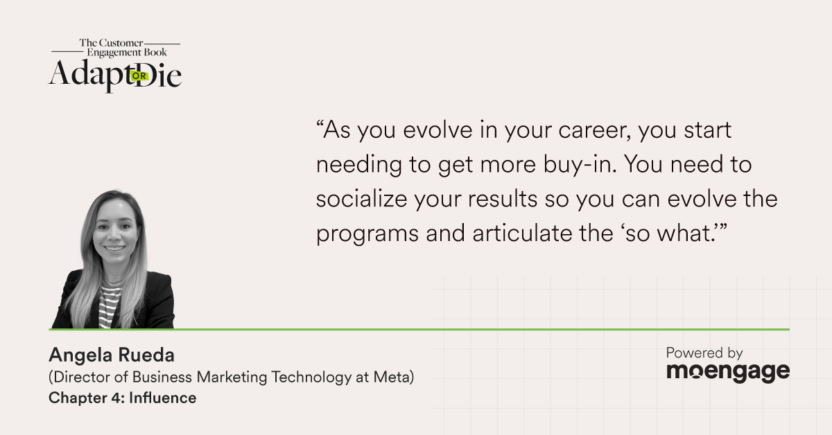
This was really critical because as you evolve in your career, you start needing to get more buy-in. You need to socialize your results so you can evolve the programs and articulate the “so what”.
2. How do you showcase the value of a new marketing idea or tool to stakeholders who might not fully understand its importance?
There are a few aspects here.
First is making sure the problem statements are customer-centric.
Then, defining metrics that are business value-driven and measurable.
Lastly, it is great to use analogies that can help people visualize the magnitude or significance of a complex concept so they can empathize with it.
That’s how I capture stakeholders’ attention and make sure that I continue to update people in that same framework so they are reminded that we’re talking about and connect to their frame of reference.
3. What role does industry knowledge or competitor benchmarking play in building credibility as a marketer?
It’s absolutely key. Particularly at large companies, it’s very easy to stay within and completely lose sight of the outside world, quickly falling behind.
Sometimes we’re building things internally, things are moving so fast, and you don’t see a need to go to the outside world. This is such a risk from multiple aspects.
The first one is for your career. If you don’t stay in tune with the market and benchmark yourself with the industry, you’re going to become irrelevant very soon, no matter how good you are within the company you’re in.
The second reason is the development of your products. I have worked multiple times building solutions internally and getting stuck.
Then, as I went to assess the solutions in the marketplace, I realized, “Wow, the things that are actually off the shelf could speed us up and free us to focus on higher value development.”
The third one is around building thought leadership. The way you build thought leadership is by piecing together multiple perspectives in a fast-evolving space.
This requires you to bring perspectives from industry.
Most of the time, the CMO will rely on you to provide that perspective, and you need to have a well-rounded view.
4. How do you identify the most influential stakeholders when introducing new marketing programs or technologies?
I like to bucket my thoughts, so again, there are three approaches.
The first one is organizational—the more political lens of looking across your organizational chart and seeing who are the leaders that are going to be sponsors and why they would care about this particular initiative.
Organizational mapping is one really important way of identifying your first set of stakeholders.
The second one is your go-to-market approach.
Whether you need your content stakeholders, your data stakeholders, your product stakeholders—you build your flow of go-to-market and make sure that you have representatives across all of those functions in the process so that you don’t run into barriers later on to deliver.
The third lens is from a platform approach.
What are the technology layers that you are dependent on to be able to get this product out?
You don’t want hidden surprises because you did not assess tech stack dependencies that were not properly prioritized by those teams.
5. What strategies do you use to align marketing goals with broader business objectives to gain leadership buy-in?
From the vantage point of launching new marketing capabilities, I like to align with the broader objectives of the business by delivering ROI through tangible outcomes.
To do this, I like to run pilots that showcase new strategies and capabilities and that have revenue goals attached to them.
Through a focused pilot strategy, we can dedicate resources and attention to unlocking the most value-driving capabilities and show leadership that they’re getting the return on their investment as soon as possible.
Then they can have the credibility to continue investing or the patience for the full rollout of longer-term strategies or implementations.
To me, the pilot approach is one of the most important strategies to align marketing goals with broader business objectives because revenue is the common language we’re speaking.
The moment you’re able to give that direct output, you’re speaking the same language, and you will have buy-in with results that you can deliver early on.
6. Can you share an example of how you navigated differing priorities between marketing and another department, such as sales or product, to secure approval for a campaign or tool?
One of the significant challenges organizations face is unifying sales, marketing, and product data.
This is a crucial but difficult task because these teams often operate in silos, making it hard to align goals.
To overcome this hurdle, senior leadership buy-in is essential to bring these three groups together.
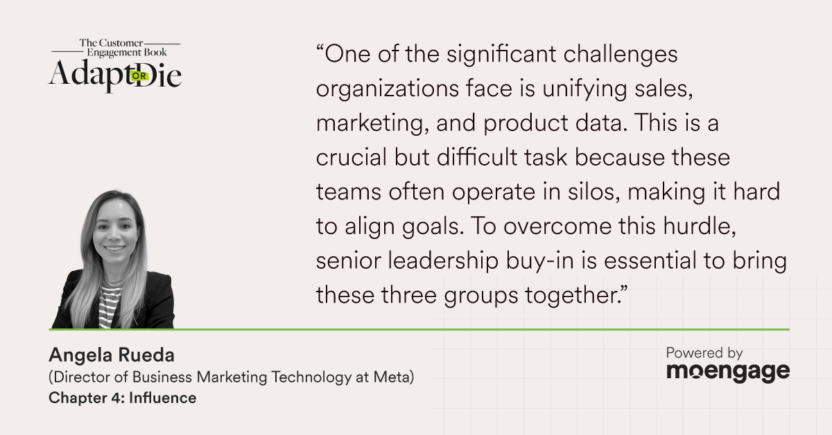
The most effective way to achieve this is by articulating customer-centric problem statements that resonate with the customer’s language.
If we started leading with the message of “We need to overhaul our data infrastructure and create a data warehouse…” you’re done—you’ve lost them.
But if you provide examples of how these data gaps are impacting the customer experience and how you’re potentially missing out on 30% of your marketable universe because you are not aligning across all of your pillars, you’ll get their attention.
For example, highlight issues like, “We’re sending emails with incorrect names due to outdated contact data,” or “We’re providing inaccurate metrics that confuse customers instead of helping them.”
By presenting concrete examples of how customers are impacted by these data issues, you can grab the attention of leadership and create a sense of urgency, prompting them to unite against this challenge.
To get leadership, you need to tell a story that matters to them. Then, once that’s prioritized, build collective goals for teams that usually have siloed goals and get them to work together and let go of the ownership of their tools, and think about an ecosystem.
Once you get people thinking about an ecosystem and they have a collective goal, you’ve broken through—you’re creating new things, and that’s when the really good stuff happens.
7. When pitching a new marketing strategy or technology, how do you structure your presentation to resonate with both creative and data-driven stakeholders?
One of the things that’s super important is the problem statements.
I had many presentations in the past where the first question I got was, “What are we trying to solve here?” I realized this is where you start—with the problem.
The second thing is the visualization of the space. One of the things that has worked really well for me in multiple instances is showing the journey of the customer.
I draw this journey showing the actual marketing messages that customers are getting. Then I call out the technology that will power either the personalization or the channel or the data input that we’re using there.
The third piece for more data-driven stakeholders is the rigor behind a business case.
This might not apply to every single thing, but when we are driving a new tool that requires investment, going through the effort of doing the full business case and showing what the potential ROI is going to be and how you’re going to get there is key.
The last piece, which I really love, is the architectural map.
How does everything come together? I usually do a level-up view of what a typical technical architecture diagram would be so that it’s more business-friendly.
This one is really a hit with technical stakeholders, but will also get the attention of business stakeholders once you get into more granular conversations.
8. What role does customer engagement data or campaign performance metrics play in convincing stakeholders to adopt a new idea?
This plays a pivotal role in our strategy.
In fact, when I discussed our pilot approach, it’s closely tied to this concept because it’s not just about revenue growth, but also about demonstrating engagement and proving that we can drive higher levels of interaction.
By doing so, we can secure buy-in for further rollouts or continued investment.
Moreover, the discipline of ongoing customer engagement tracking and measurement is crucial.
We’ve identified significant issues by monitoring these customer engagement metrics and digging deeper when they drop. This process not only helps us secure buy-in and investment but also informs our platform’s performance strategy.
When presenting these metrics, it’s essential to build a framework that tells a complete story.
Rather than looking at data in isolation, we aim to create a funnel view that showcases the entire customer journey. Key questions to answer include:
- Are we reaching more audiences?
- Are our communications effectively engaging them across various channels (e.g., on-platform, email)?
- Are they taking the desired actions?
- Do we have sales leads as a result?
By examining campaign performance metrics holistically, we move beyond typical open and click-through rates to gain a more comprehensive understanding of our efforts.
9. How do you demonstrate the long-term impact of a marketing investment, such as new technology, on business outcomes like customer retention or revenue growth?
I employ two primary methods to demonstrate the long-term impact of our investments.
First, when introducing new technology, we develop a comprehensive business case that outlines expected efficiency and effectiveness gains. This case serves as a benchmark against which we track our progress.
Then, we measure the performance of our campaigns to assess their effectiveness at scale.
By analyzing campaign metrics, we can determine whether the introduction of additional data and capabilities leads to improved outcomes.
This ongoing evaluation enables us to refine our strategies and optimize results.
To maintain momentum and build a compelling narrative, it is key to remain disciplined in tracking progress.
While developing a business case is crucial, it’s only a theoretical framework. To validate its effectiveness, we rigorously measure our performance against the established benchmarks. This diligence helps us demonstrate tangible results and secure continued investment.
We establish dashboards from the outset as they’re vital for effective tracking. Attempting to retroactively gather data can be challenging and may lead to incomplete or inaccurate information.
By building our measurement framework from the beginning, we’re able to monitor progress, report on successes, and craft a compelling story of our achievements.
10. How do you prioritize which marketing programs or tools to advocate for when faced with limited budgets or competing initiatives?
When faced with limited budgets or competing initiatives, I prioritize marketing programs and tools by focusing on two key areas: reliability and optimization.
First, I ensure that our foundation is solid by investing in reliable execution. This means addressing any operational gaps or inefficiencies to get the business running smoothly.
By doing so, we can establish a strong baseline for future growth.
Next, I focus on optimizing marketing performance through data-driven insights. A well-structured data foundation is crucial, as it enables us to make informed decisions about which tools and initiatives to prioritize.
With a solid data infrastructure in place, we can then evaluate the need for additional solutions, such as a Customer Data Platform (CDP), and assess their potential impact on our marketing performance.
By following this framework, we can effectively allocate resources, maximize ROI, and drive business growth.
11. What techniques have worked for you to gain support from cross-functional teams for an omnichannel marketing program or new martech investment?
Gaining support from cross-functional teams for an omnichannel marketing program or new martech investment requires a strategic approach.
For me, it starts with inspiring and motivating leadership to champion the initiative.
When leaders are invested in a project that’s innovative, transformative, and tangible, they’re more likely to rally their teams behind it.
To build momentum, I focus on creating projects that can be career-defining for team members.
This involves a bold vision, ambitious goals, and exemplary execution standards. By inspiring, recognizing and rewarding individual and team contributions, we can maintain enthusiasm and motivation throughout the project.
Another key technique is to establish a cross-functional core working team.
By involving leaders from dependent areas, we ensure that every stakeholder has skin in the game and a vested interest in the project’s success.
This collaborative approach not only fosters buy-in but also encourages shared ownership and accountability.
12. What advice would you give to younger marketers about building influence and trust when proposing innovative, and sometimes risky, marketing strategies?
Ideas alone are not enough. A lot of times, young people have ideas and they raise their hand, and that’s great. Bring the plan along with the idea.
Because innovation is nothing without execution.
If you bring an idea and you bring a plan on how it would be possible and you bring some key measurable outcomes from it, it’s going to go much farther than if you just bring the idea.
The second thing is to build a sponsor in the organization.
Before you raise your hand for ideas, find a leader or trusted set of team members who can help validate your idea, help plug in additional details that you might need, and connect you to other people so that you can really validate it before you expose it to others.
The last piece is if you’re bringing a risky idea, come with the risk mitigation plan as well.
Not just with the execution plan, but what is the risk mitigation, what is the worst that can happen, how you can scope down the risk, and that will also make it more manageable.
This interview Q&A was hosted with Angela Rueda, Director of Business Marketing Technology at Meta, for Chapter 4 of The Customer Engagement Book: Adapt or Die.
Download the PDF or request a physical copy of the book here.

